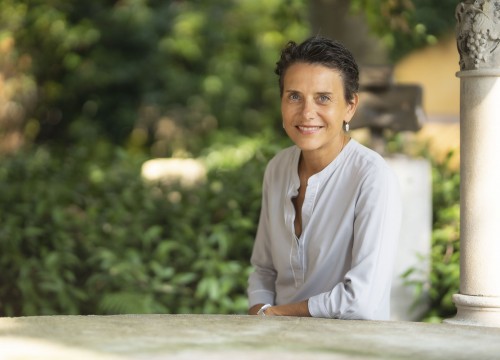Remembering Carlo Cardazzo
In Venice, Milan and Rome the exhibitions of the most important art of the second half of the 20th century
“With reference to your letter of 9 November, I would like to inform you that Sir Cardazzo is still not in Italy... I can only suggest that you await his return to Naviglio. With these words, on 11 November 1963, Ada Zunino, secretary of the Naviglio Art Gallery, replied to the last of the four letters I had sent to Carlo Cardazzo since 24 April of that year, after visiting the Eugenio Carmi exhibition at the end of February, when I had met him for the first time in April 1960 on the occasion of Achille Perilli’s solo exhibition.
A fruitless wait, unfortunately. That reply, in fact, would turn out to be a painful lie, since the great Venetian art dealer would die only a few days later, on 16 November, at a little over 55 years of age. His was an intense life, built up and developed through a passion for art, with a father who was a collector and a house in calle dei Ragusei, frequented by intellectuals who studied and discussed literature, music and even cinema, where the young Carlo began his adventure with the purchase of a work by Filippo de Pisis.
He then moved on to 20th century painting and the Italian avant-garde (Carrà, Campigli, Modigliani, Soffici, Manzù, etc.) Thanks also to the painter Giuseppe Cesetti, to whom he would dedicate a small volume in 1934 with writings by Rosai and others, he started Cavallino Editions (international contemporary poetry, surrealism, futurism, as well as graphics, designer scarves and records) and built an important collection that would attract the interest of the Minister of National Education.
On 25 April 1942, Carlo Cardazzo, with the help of Carlo Scarpa, “the most modern architect in Venice”, who was later involved in the design of the Book Pavilion in a park (1950), and the collaboration of his brother Renato, who left his architectural studies for art, opened the Galleria del Cavallino in Riva degli Schiavoni with a group exhibition including the work of Campigli, Carrà, Cesetti, Marino, Romanelli, Rosai, Sironi and Tosi.
This would be followed by bi-weekly exhibitions featuring drawings by Italian literati, sketches for theatre sets, and artists such as Balla, Kandisky, Léger, Picasso, Matisse, Miró, Brauner, Vedova, Calò, Bertini, Tancredi, Pignatelli and others. With texts in the catalogue by Gualtieri di San Lazzaro, Carrieri, Marussi, Marchiori, Valsecchi, Apollonio, Carandente. He moved to progressive Milan, having as his life and work companion the poetess and writer Milena Milani, he opened the Galleria del Naviglio at 45 Via Manzoni with a collective in early January 1948 (Birolli, Cantatore, Paulucci, Spazzapan, Tomea, etc.), while his brother Renato remained in Venice to take care of the Cavallino.
An intense life developed in a passion for art. He also surrounded himself with writers and musicians
The masters remained at the centre of his attention, as he opened up more and more to the new. Dubuffet, Schwitters, Jorn, Twombly, Caro, Johns, Kline, Capogrossi, Scanavino and many others appeared on the walls of the gallery, which became the driving force behind Spatialism, with Lucio Fontana presenting his black light Spatial Environment on 5 February 1949.
In October 1950, thanks to his friend Peggy Guggenheim, Cardazzo presented the first exhibition of Jackson Pollock in a private gallery, and in 1955, in a clear marketing move, he and Vittorio Del Gaizo set up the Galleria Selecta in Rome, which closed in 1960.
After Carlo’s death, the two galleries continued their activities under Renato’s direction, who had already moved to Milan in 1962. On 29 September 1966 the galleries split up, Renato, with his son Giorgio at his side, directed the Galleria del Naviglio until 2001 (which, transformed into Naviglio Modern Art, continued until 2011), while Paolo and Gabriella, Carlo’s children, took over the direction of the Galleria del Cavallino, which closed its doors in 2003, and Cavallino Editions, which ceased operations on 31 March 2010
























